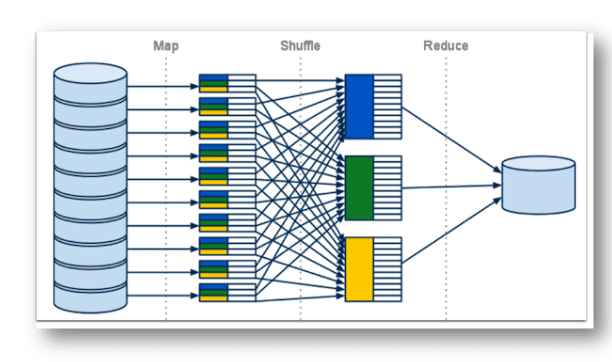Hashgraph is a technology analogous to blockchain, which works to achieve the goal of a distributed ledger. It is a swift and secure data structure and consensus algorithm. The only point of difference between the two, is that there are no blocks formed in Hashgraph technology and hence no chain of blocks. Hashgraph had once claimed to replace blockchain and many of its drawbacks. But at the same time, there are no crypto-currencies which run on Hashgraph and the team seems to be working only on private networks. It utilizes techniques such as Gossip-on-Gossip and Virtual Voting to achieve network consensus quickly and securely. Tests have shown a massive network capacity of 500k transactions per second with very short consensus times in the range of seconds. This technology is young and unproven but definitely has the potential to cause some waves in the world of distributed ledger technology.
Bitcoin, the first cryptocurrency, gained much attention due to its high speed of transactions and also cheap transaction fees. However, by the end of 2017, due to its highly fluctuating prices, the network has grown slower and costlier. This resulted in Scalability issues of the Blockchain. To cater to this issue, a company named Swirlds, tried to build a new system which is faster, cheaper and more efficient than Blockchain. This system is called Hashgraph. According to Swirlds,
“Hashgraph is a new consensus algorithm, based on a superior distributed-ledger technology, which eliminates the requirement of massive computation and unsustainable energy consumption like those of Bitcoin and Ethereum.”
Is Hashgraph making Blockchain dated?
No, Hashgraph is not making blockchain dated. It is only reinforcing what a great breakthrough blockchain is, by addressing some of the important deficiencies which have been widely recognized over time. The key issues which these deficiencies center around are:
- Scalability: The linear nature of blockchain effectively imposes serialization, which is definitely not necessary and is quite costly, especially considering costs of proof-of-work. Recent plasma proposal by Joseph Poon and Vitalik Buterin addresses this issue by introducing more structure through the incorporation of side chains, which are then synchronized with the main Ethereum blockchain. Computations in this tree structure are performed by Map and Reduce functions which reduce trees to scalar results.
- Proof-of-Work (POW): This inefficiency occurs due to its cost. POW was originally incorporated into Blockchain to deter attacks by making them costly, thus facilitating achievement of consensus. Coupled with the linear nature of an original Blockchain, it offered a clear way to do so. The practice of operating Bitcoin for years now has shown that transaction throughput is very low because of the linearity and complexity of POW.
Hashgraph is merely an approach to address the aforementioned issues by introducing acyclic directed graphs instead of linear chains. The idea is that this replacement should be the most general and basic way of splitting linear computations into tree-like computations. It seems that the plasma approach in Ethereum is more general, and complex, as it explicitly introduces MapReduce functions as means of reduction and achievement of consensus. There does not appear to be such a general mechanism in Hashgraph. The following illustration successfully shows the map and reduce programming model of a Hashgraph.

Image credits: Semantic Scholars
Will Hashgraph replace Blockchain?
At the moment that’s kind of questionable. According to Kumar T, a blockchain expert, “Although Hashgraph rectifies the major flaws found with the Blockchain, it is not likely to replace blockchain as it is proven and widely acknowledged for its capability. Besides, many applications are being developed and tested on the blockchain. So, it is possible that in future hashgraph or sharding solutions can be used to improve the blockchain architecture ”. While Hashgraph has some interesting properties that make it superior to blockchain; it also is not without its limitations. From what the developers of Hashgraph are saying on the telegraph server, Hashgraph cannot scale much above 1000 nodes. Blockchain is mostly limited by the transaction rate. Whereas, Hashgraph is limited by the number of nodes which it needs to communicate “gossip” about. Apparently, they plan on utilizing some sort of “sharding” solution to deal with that, the plan for the same is still unclear. Generally, Sharding either requires super-nodes which can see all of the transactions that occur, or it sacrifices security by “taking the word” of nodes outside of the local shard group regarding transactions and state.
Despite the core issues of the technology of blockchain, companies are successfully utilizing it for the good of many. For instance, the technology of blockchain can be well-utilized for tracking of valuables as they transfer across different individuals in the supply chain. Blockchain offers many more efficient alternatives for the organizations that constantly transport goods or valuables. The various entries on to the blockchain can further line up the events or the advent of goods with the aid of the supply chain. DiscoveryIoT is one such startup which has come up with more than one revolutionary provision which will allow different companies to trace their goods through their supply chains, giving equal importance to the factor of their intervals. The company uses smart contract to pair their IoT tag affixed on any item and the smartphones in the vicinity. The information is then transmitted to the phone via WiFi or Bluetooth communication protocols and is stored in an app based on the blockchain. By using cellular network the processed data is further transmitted to the cloud for performing analytics.
I personally don’t think that Hashgraph can replace the Blockchain. Interestingly enough, Hedera Hashgraph is an upcoming hashgraph based distributed consensus network that looks to offer distributed ledger for decentralized applications. The company recently raised $100 million and plans to launch their network next month. However, considering it is a permissioned network, it remains to be seen whether better performance will be preferred over openness. I speculate that that this technology could be used in a specific area for specific needs in a closed system, hardly publicly and if so, most likely in connection with blockchain technology as an on-chain or side-chain.



































